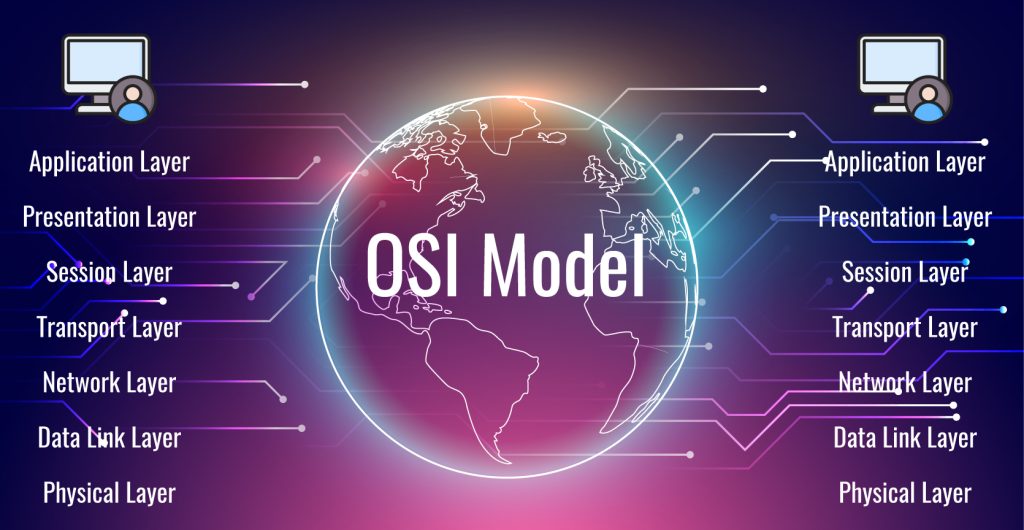OSI Model
The OSI (Open Systems Interconnection) model is a conceptual framework used to understand and describe how different network protocols and technologies interact within a computer network. It consists of seven layers, each responsible for specific functions in the process of transmitting data from one node to another across a network. Here’s a brief overview of each layer and its functions:

1. Physical Layer:
– This layer deals with the physical transmission of data over the network medium (such as copper wires, fiber optic cables, or wireless signals).
– It defines characteristics such as voltage levels, data rates, and physical connectors.
2. Data Link Layer:
– The data link layer is responsible for the reliable transmission of data frames between adjacent nodes connected by a physical layer.
– It ensures error-free transmission over the physical layer by detecting and correcting errors using techniques like checksums.
– It also handles flow control to prevent overwhelming the receiver with data.
3. Network Layer:
– The network layer manages routing and addressing, determining the optimal path for data to travel from the source to the destination across multiple networks.
– It encapsulates data into packets and adds logical addresses (such as IP addresses) to facilitate end-to-end communication.
4. Transport Layer:
– The transport layer ensures end-to-end delivery of data by providing mechanisms for error detection, correction, and flow control.
– It breaks down large data streams into smaller segments and reassembles them at the receiving end.
– It also establishes, maintains, and terminates connections between applications, offering reliability and ensuring that data is delivered in the correct order.
5. Session Layer:
– The session layer establishes, maintains, and terminates connections (sessions) between applications running on different devices.
– It provides services such as authentication, authorization, and session checkpointing to support reliable communication between applications.
6. Presentation Layer:
– The presentation layer is responsible for data formatting, encryption, and compression to ensure that data sent by the application layer of one system can be read by the application layer of another system.
– It translates data into a format that the application layer can understand, regardless of the differences in data representations between systems.
7. Application Layer:
– The application layer is the topmost layer of the OSI model and is closest to the end user.
– It provides network services directly to end-user applications, such as web browsers, email clients, and file transfer utilities.
– It enables communication between different applications by implementing protocols and standards for specific services, such as HTTP for web browsing and SMTP for email transmission.
Each layer of the OSI model relies on the services provided by the layers beneath it, while also providing services to the layers above it, creating a hierarchical and modular framework for network communication.